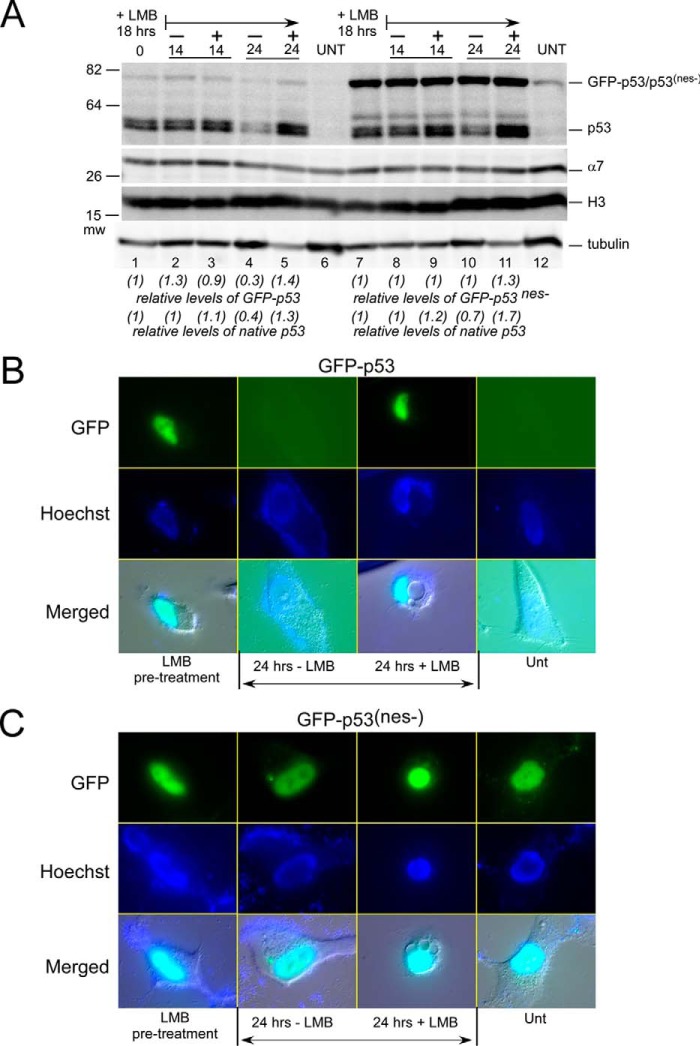FIGURE 8.
Export defect stabilizes p53 and causes accumulation in the nucleus. A, we expressed GFP-p53 and GFP-p53(nes−), a mutant that is poorly exported, in HCT116 cells. GFP-p53 and native p53 are poorly detected in untreated cells (lane 7). Treatment of cells with leptomycin B (+LMB 18 h) resulted in elevated levels of native p53 and the GFP-tagged derivatives. The cells were placed in fresh medium either containing (+) or lacking (−) LMB, and extracts were prepared after 14 and 24 h. Native p53 levels decreased after 24 h in the absence of LBM but remained elevated in the presence of LMB (compare lanes 4 and 5). Similarly, we detected a modest decrease in the levels of GFP-p53 at 24 h (−LMB). In contrast, the levels of GFP-p53(nes−) were strongly increased following treatment with LMB, and removal of LMB did not result in any appreciable decrease in its levels, even after 24 h (lane 10). B and C, HCT116 cells were pretreated with LMB for 18 h, and the localization of GFP-p53 and GFP-p53(nes−) was examined. Both GFP-p53 and GFP-p53(nes−) were strongly enriched in the nucleus (upper panels). Cells were incubated in fresh medium either containing (+) or lacking (−) LMB, and the protein levels were examined after 24 h. GFP-p53 was entirely eliminated, whereas high levels of nuclear GFP-p53(nes−) remained. Unt, untreated.

